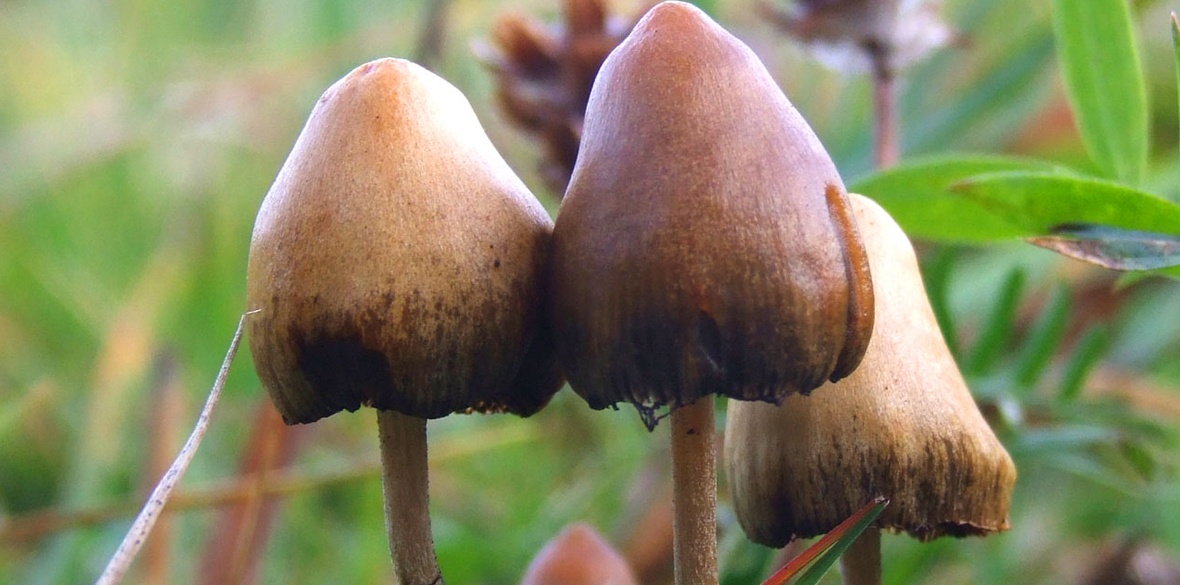This is the last article you can read this month
You can read more article this month
You can read more articles this month
Sorry your limit is up for this month
Reset on:
Please help support the Morning Star by subscribing here
MUSHROOMS — specifically magic ones — are in the spotlight. A growing body of research is showing that psilocybin, the main psychoactive compound in magic mushrooms, has potential in treating psychological disorders like depression, addiction and PTSD.
Of the nearly 200 species of psychedelic mushrooms that have been identified worldwide, mainly in Central America, only one — Psilocybe semilanceata — grows in any abundance in northern Europe. Like many mushrooms, Psilocybe semilanceata is generally known not by its scientific designation, but by its common or folk name, the “liberty cap” mushroom.
For years, this bothered me. As a Roman historian, I know the liberty cap — the pileus, in Latin — was a hat given to a Roman slave on the occasion of their being freed. It was a conical felt cap, shaped like that of a smurf and which undeniably bears a clear resemblance to Psilocybe semilanceata’s distinctive pointy cap.
But how on Earth did an obscure Roman social practice end up lending its name to a modern psychedelic? The original liberty cap was an actual hat, worn by freed slaves in the Roman world to mark their status — no longer property but, tainted by their history, never truly “free.” For the freed man, it was a symbol both of pride and shame.
But in the year 44 BC, the hat gained a new cultural currency after Julius Caesar was famously murdered on March 15, the Ides of March. To advertise his part in the deed, Marcus Junius Brutus — of “et tu, Brute” fame — minted coins, the obverse of which bore the legend EID MAR (The Ides of March) beneath a pair of daggers and the distinctive liberty cap. Brutus’s meaning was clear: Rome herself had been freed from Caesar’s tyranny.
Brutus’s use of this symbol translated it from a low status social marker into an elite political symbol and one that enjoyed a considerably longer life than the short-lived Brutus himself. Throughout the remainder of the Roman period the goddess Libertas and the liberty cap were a commonly employed shorthand by emperors keen to stress the freedom that their absolute rule bought.
With the collapse of Roman power in Europe in the 5th century AD, the liberty cap was forgotten. But during the 16th century, as interest in and explicit emulation of Roman antiquity began to spread through the countries of Europe, the liberty cap again reached public consciousness.
It again began to be used as a political symbol. When the Dutch drove the Spanish from Holland in 1577, coins bearing the liberty cap were minted and William of Orange likewise minted liberty cap coins to commemorate his bloodless seizure of the English throne in 1688.
But it was in two of the great republican revolutions of the 18th century, the French and American revolutions, that it became a truly popular icon. Now blended with the visual form of the ancient Phrygian cap, the liberty cap — “bonnet rouge” in French — appeared no longer merely as a representational device but as an actual item of headwear or decoration.
In France in the summer of 1790, an armed mob stormed the royal apartments in the Tuileries and forced Louis XVI, later to be executed by the revolutionaries, to don the liberty cap. In the US, revolutionary groups declared their rebellion against British rule by raising a liberty cap upon a pole in the public squares of their towns.
The revolutions of France and the US were viewed with considerable disquiet from Britain. But the pole and cap of liberty clearly made an impact [in Britain].
Omniana, a two volume collection of table talk and miscellaneous musings intended to educate and inform the would-be conversationalist in 1812 [included] the following observation on the Cap of Liberty: “There is a common fungus, which so exactly represents the pole and cap of liberty, that it seems offered by nature herself as the appropriate emblem of Gallic republicanism.”
The precise mushroom with the cap of liberty metaphor [was not identified]. But as the discipline of mycology, the study of fungi, began to cement itself in the 19th century, the name was clearly and universally associated with Psilocybe semilanceata
At that time, this was an utterly obscure and unremarkable little mushroom below the notice of any but devoted mycologists. As common names for mushrooms began to be included in mycological handbooks, Psilocybe semilanceata was routinely identified as the liberty cap. By the 20th century, the name was firmly established.
The story could, perhaps, end there, but it has a delightful coda. The liberty cap mushroom was propelled from total obscurity as merely one of literally hundreds of innocuous LBMs — little brown mushrooms — known only by scientific specialists to perhaps one of the best-known members of Europe’s mycological fauna.
Throughout the literature written by Europeans on the customs and religions of the peoples of Central America, there existed rumours of a magical food that the Aztecs called teonanacatl, “the divine mushroom,” and in the early part of the 20th century it captured the imagination of seemingly the most unlikely man on the planet, Robert Gordon Wasson.
The vice president of Wall Street banking firm JP Morgan, since the 1920s he had been obsessed with ethnomycology, the study of human cultural interactions with mushrooms. Wasson travelled to Mexico and there, after a long and frustrating search, finally found a woman who was willing to initiate him in the secrets of the sacred mushroom.
He became perhaps the first white man to intentionally ingest a hallucinogenic fungus and published his experience in a 1957 Life article, Seeking the Magic Mushroom
In 1958 a team led by the Swiss chemist Albert Hofmann, who first synthesised and ingested LSD, was able to isolate the main psychoactive compound in the mushrooms, which was named psilocybin as a nod to the fact that it was primarily mushrooms of the genus Psilocybe.
None other than the innocuous little liberty cap contained psilocybin and although there are other psychedelic species that grow in Britain, the liberty cap has secured a reputation as the poster child for Britain’s domestically growing psychedelic fungi.
Modern “shroomers” can’t resist punning on the liberty cap name — with its associations to the transcendental “liberation” afforded by psychedelics — and grassroots organisations such as the Shroom Liberation Front attest to this fact.
But in origin, the liberty cap’s name has nothing to do with psychologist and psychedelic drug advocate Timothy Leary (“turn on, tune in, drop out”) or the 1960s counter culture.
Rather, and somewhat improbably, it traces a path back through the political revolutions of the early modern period, via the murder of the tyrant Julius Caesar, to a conical cap worn by Rome’s former slaves.
To place the cap on their heads was a sign of their liberation. To pluck the modern liberty cap from the ground could see you spending a cool seven years in jail.
Adrastos Omissi is a lecturer in Latin Literature at the University of Glasgow. This is an abridged version of an article published in The Conversation, theconversation.com











